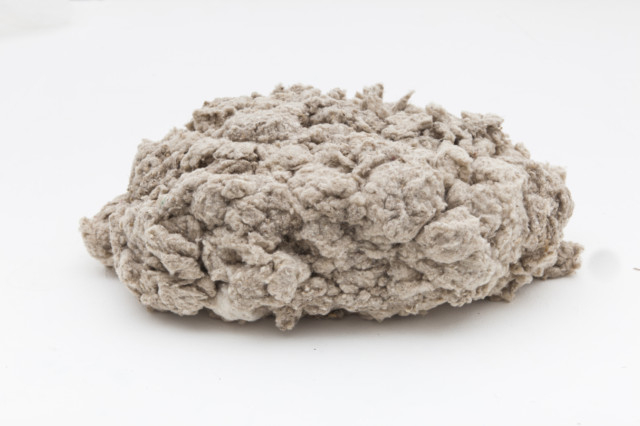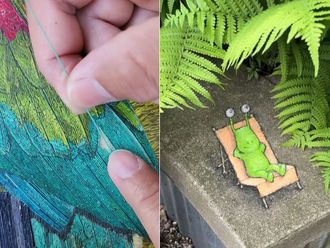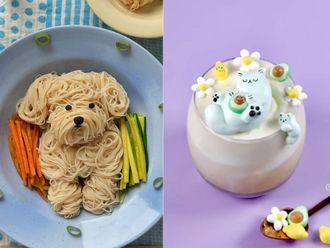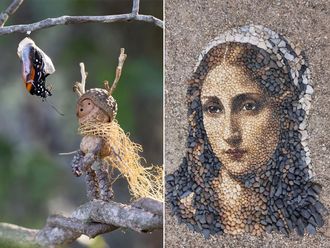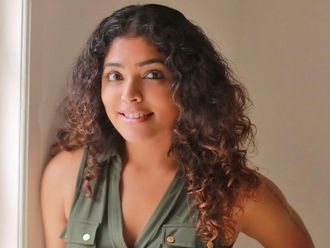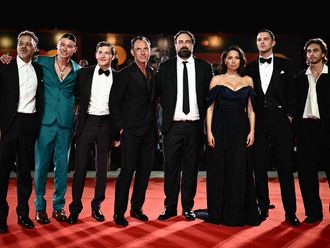
When Hassan Sharif began his artistic journey in the 1980s, few people in the region understood his work. But today, the Emirati artist is recognised as a pioneer of conceptual art in the Gulf region, and his work is included in the collections of prestigious art institutions such as the Mathaf: Arab Museum of Modern Art, Qatar, the Mori Art Museum Tokyo and the Guggenheim Abu Dhabi.
Born in 1951 in Dubai, Sharif studied fine arts in London and was among the first Emirati artists to experiment with performance art and to use the concept of semi-systems in his work. But he is best known for his installations made from ordinary, everyday objects using rudimentary processes such as tying and knotting.
He has also made significant contributions to Emirati art as an educationist, writer, founder-member of the Emirates Fine Art Society, founder of the Dubai Art Atelier for Youth Theatre and Arts, and mentor to two generations of Emirati artists.
In his latest show, “Approaching Entropy”, Sharif presents new works in his series of objects and semi-systems. The objects include his signature piles of material (innerwear in this case) placed on the floor, as well as “wall hangings” made from strips cut out of towels, carpets, textiles, rubber mats, ropes and rusted iron sheets.
While the process Sharif uses for creating his objects is random, playful and open-ended, his experiments with semi-systems are based on arbitrary rules that he sets for himself.
Using ink or pencil on a grid drawn on paper, he explores the infinite possibilities of simple elements such as dots, lines and basic shapes to create repetitive, precisely measured patterns. In the series featured in this show called “Nine Points Angular Lines”, he has taken this process further by crafting wooden reliefs based on the shapes generated by this semi-system.
The show also features a video, “Cotton”, showing the artist creating a simple “object” by sticking together pieces of raw cotton with glue. The video is a documentation of the simplicity and ease of his creative process and makes a statement about his philosophy of art. Sharif spoke to Weekend Review about his work, and the art scene in this region. Excerpts:
What changes have you seen in the art scene in the UAE and the region?
In 1985, my solo show at the Emirates Fine Art Society was heavily criticised, and people accused me of not being an artist at all, because they could not accept that my art was different. But today, we have people such as Barrak Al Zaid, the young Kuwaiti curator of this show, who not only understands my work, but has added a new dimension to it with his curatorial concept of “approaching entropy”.
I am happy that with so many galleries offering different kinds of art, and art institutions being built; people now understand that art is multidimensional.
How do you see your role in this change?
There were many others who stood with me all these years, and by exhibiting together and discussing contemporary art, we were able to expand the space. I was always optimistic that this change would happen. I always wanted an audience that is educated and understands art, and so, while I was making my art, I was also making my audience.
Today, my audience is the new generation, and this process must continue. I have been accused of moving away from my heritage and identity. But respecting tradition does not mean going on doing the same thing for ever, which has no connection with contemporary times. My identity as an Emirati is inherent in whatever I create, and creation of contemporary art is part of the process of making heritage.
What is your concept of art?
For me art is simple and easy. You can find it all around you. My work reflects what is happening around me through the materials I use. In this show I have used simple, cheap materials such as inner wear, towels and rugs that are so much part of everyday life that we barely notice them.
These materials are connected with the body, with human touch and our environment. I also used strips of iron, which is used for making things ranging from tiny nails to buildings and bridges. In fact iron is more important than gold in our life. All around me I see cranes lifting iron bars and hear the clanging sound, and this work incorporates that dynamic.
Dubai is a trading hub where various products come from around the world are stored in warehouses, then sold by businessmen for profit, and consumed by people. I am also a consumer, buying goods in bulk, but I also create something from them. I take things from the environment and return them in another form. I am a thief, who steals these goods from the traders, and puts them in an art gallery.
What is this semi-systems series about?
I started with a random choice of nine points on the grid, but then went systematically across the grid trying to capture hidden lines or to visualise angular lines. From the 80 “drawings” generated, I selected eight with the simplest shapes, on which the wooden “sculptures” are based.
These wooden pieces are simple shapes that are found everywhere, but the entire process of arriving at them has given them a deeper meaning. But I must point out that I never like to conform to any systems, so my semi-systems allow me to make mistakes, which add to the work.
Is this process meditative?
Meditation is for monks. Art is not meditation. Art is about being awake and being present in the moment.
Jyoti Kalsi is an arts enthusiast based in Dubai.
“Approaching Entropy” will run at Gallery Isabelle van den Eynde until January 2, 2014.


